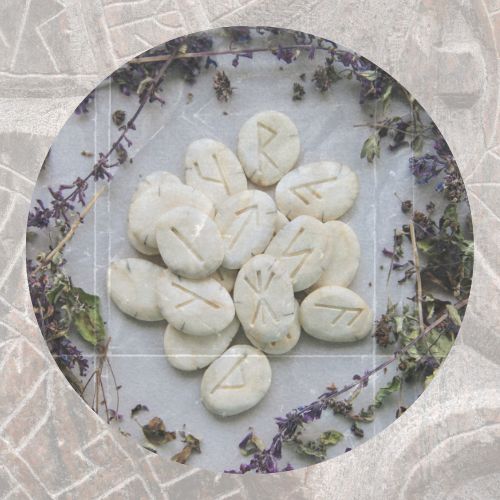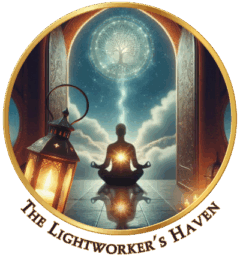
I’m excited to take you on a journey—not through the physical world, but a fascinating voyage back in time. We’re diving into the origins of the Elder Futhark runes, an iconic alphabet shrouded in mystery that dates back to the 2nd century. These runes aren’t just symbols; they are the keys to unlocking the words and thoughts of our ancestors.
As we unravel the layers of history, we’ll discover how early Germanic tribes crafted an alphabet that laid the groundwork for written communication among the Norse and other Germanic peoples. The development of the Elder Futhark wasn’t a sudden occurrence; it was a rich tapestry woven from various cultural and linguistic influences that coalesced into distinct inscriptions.
You’ll learn about significant archaeological discoveries that have illuminated our understanding of the Elder Futhark. The earliest rune inscriptions, like those on the Kylver Stone, offer snapshots of a distant past, sparking passionate scholarly debates and providing invaluable insights into how early Germanic peoples communicated.
But remember, this exploration isn’t solely about ancient alphabets; it’s also about connecting with our past. By interpreting these runes, we open a window into a world where the written word was both a novelty and a sacred act. Understanding the origins of these runes helps us appreciate the complexities of ancient communication and cultural exchanges.
So, with a glimpse into their backstory in mind, let’s transition to what these symbols actually mean. Next, we’ll decode the Elder Futhark runes, exploring their depth and how they seamlessly integrated into everyday life in ancient Germanic societies.
The Runes as Communication: Script and Symbolism

Imagine yourself as a traveler in ancient Scandinavia. Your main tools for recording anything from a simple trade agreement to an ornate grave marker are these intricate symbols known as runes. The Elder Futhark, composed of 24 distinct characters, was the primary script for these early Germanic peoples. Each runic symbol represented a unique sound, akin to the letters of our modern alphabets.
But these runes were more than just practical tools for jotting down notes or etching names into stone. They carried a significance that went far beyond their simple forms. The Elder Futhark runes were potent symbols, believed to possess magical properties. Their use transcended mere communication; they were woven into the very fabric of Norse social and spiritual life.
What might surprise you is the versatility of these characters. Runes could embody both the mundane and the mystical, sometimes even within the same inscription. This duality reflected the Norse worldview, where the practical and the spiritual were deeply intertwined. Each rune had a name, a meaning, and an associated myth or deity, lending the characters profound depth and narrative power.
Understanding the script requires piecing together archaeological finds—like rune stones, weapons, and jewelry. These artifacts tell us how runes were utilized in daily life, whether for declaring ownership, dedicating to the gods, or serving as amulets. Each inscription offers insight into the complex tapestry of Nordic culture.
From Scratches on Stones to Sacred Symbols

Let’s take a moment to explore how these seemingly simple characters transcended their original purpose to become revered symbols of spiritual significance. Runes began as a practical writing system, but over time, their mystical aura became undeniable.
You’ll discover how these characters were etched onto amulets, carved into memorial stones, and invoked in rituals. This practice wasn’t random; it was deeply rooted in the Norse psyche and carried profound psychological weight.
You don’t need to grasp all the intricate mythologies just yet, but it’s essential to know that runes were often associated with the god Odin, who sacrificed himself to acquire the knowledge of runes. This connection illustrates the sacredness attributed to these symbols.
Each rune had its own name and esoteric meaning, echoing the collective Norse consciousness. From ensuring victory in battle to predicting the future, runes served as a bridge between the earthly and the divine. Over time, their potency became woven into Nordic folklore, securing an enduring legacy.Now, what happened next? The evolution from Elder Futhark to Younger Futhark is a fascinating tale of change. Ancient inscriptions reflect the evolution of languages, cultures, and beliefs. While you can always adjust your approach later, for now, let’s appreciate the rich symbolic dimension of the Elder Futhark as we explore how and why these symbols transformed over the centuries.
The Evolution and Expansion: From Elder to Younger Futhark
The transition from Elder to Younger Futhark isn’t merely about a few design changes; it’s a narrative of linguistic evolution and cultural adaptation. As languages develop, they often simplify to meet the practical needs of their speakers—and this is precisely what happened with the Norse runes.
You’ll want to appreciate the regional influences at play. Migrations, trade, and interactions with cultures like the Anglo-Saxons and Latins stirred the pot, leading to shifts in language use and, subsequently, in how it was written.
Around 800 AD, the Younger Futhark emerged, a streamlined version of its predecessor with only 16 characters. You might wonder why this reduction occurred when the Elder Futhark’s 24 runes seemed to adequately cover the linguistic landscape. The phonetic shifts in Old Norse—like the merging of vowel sounds—made some runes redundant. Efficiency took precedence, allowing the language to adapt to a smaller, more versatile set.Regional variations of the Younger Futhark emerged, including the Danish and the Swedish-Norwegian Futharks. Each had its unique quirks and characteristics, showcasing the diverse applications and needs of the communities that used them. While specifics can be complex, the key takeaway is that the Elder Futhark was not static; it responded dynamically to a changing world.
What’s truly captivating is how these changes mirror the fluidity of human communication. We often take for granted the stability of our alphabets, but the transition of Norse runes serves as a powerful reminder that languages are as alive as the cultures from which they arise. Choose a detail that resonates with you from this historical narrative, as it beautifully illustrates how societies organically shift and reshape their tools of expression.
Legacy Preserved: The Elder Futhark in Modern Times
Let’s explore the intriguing ways in which the Elder Futhark runes remain relevant today. Our fascination with ancient scripts and languages is more than just an academic pursuit; it connects us to our collective past.
In popular culture—be it literature, movies, or video games—the Elder Futhark runes often evoke a sense of mystery and authenticity. They captivate audiences worldwide with their enigmatic appeal.
Historical preservation groups play a crucial role in sustaining this legacy. Organizations like The Viking Museum in Sweden and The Jorvik Viking Centre in the UK work tirelessly to ensure that the knowledge and understanding of these ancient symbols aren’t lost to time.
There’s also a vibrant community of enthusiasts who not only study these runes but incorporate them into their spiritual practices. Aspects of Norse paganism have seen a revival, with the Elder Futhark at the heart of neo-pagan rites and symbolism.
In my view, the enduring allure of the Elder Futhark runes extends beyond mere historical curiosity. They embody a deeply human desire to connect with our ancestors and understand the roots of written thought. As a testament to human creativity and expression, the Elder Futhark runes have truly achieved a form of immortality.
Feel free to share your thoughts on this article. Visit thelightworkershaven.com again soon for more on runes.
Be empowered & transcend!
Nadany

